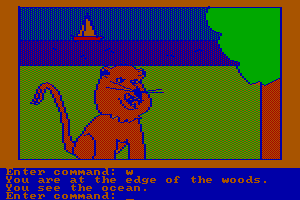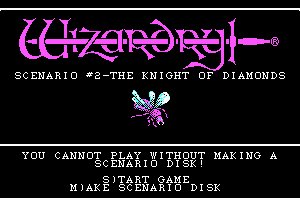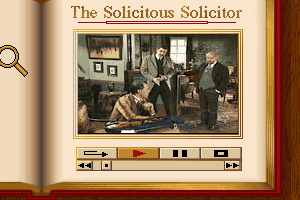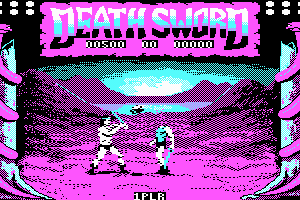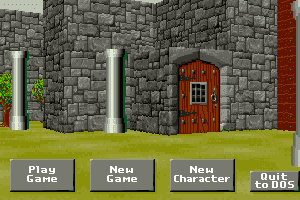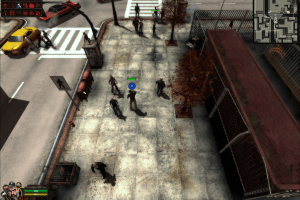The Pure Wargame
DOS - 1995
Description of The Pure Wargame
The first in an aborted Pure Wargame series, this late WW II game was disappointing in every respect: poor AI, confusing interface, and badly written manual. As loyal fan of the company, I can only speculate that the obviously premature release of the game was compelled in part by pressure from American Laser Games (QQP's new parent company) to quickly improve the company's shaky finances. Despite the interesting and less-known historical scenarios, the game was released way too prematurely. If you want to know what a bad QQP game is like, this is it.
Review By HOTUD
Vintage Review
"The Pure Wargame: Death From Above" (TPW) is the first in QQP's proposed Pure Wargame series. This volume covers airborne operations in W.W.II. The game includes 8 scenarios: from the famous airdrops at Arnhem and Crete, to the less well-know engagement at Kanev (a Russian attempt to take bridges over the Dnieper River), to the what-if of a German airborne assault on Britain (Sealion). The subject matter (airborne assault) holds a certain amount of interest and romanticism and isn't terrifically well-represented among computer games (with the possible exception of the battle for Arnhem). But the execution of TPW ruins what might otherwise have been an interesting game.
Seriously, there just isn't much here to praise. To be perfectly honest, this game feels like someone at QQP was rooting around in a storage room and discovered a set of 5.25" floppies with a previously unreleased game on them. So they crammed some sound effects and music into it, slapped it onto a CD (which except for ease of installation is a complete waste), and shipped it out. It's that bad.
In Trouble From The First Read Through
You can tell you are in trouble after just glancing through the manual. In most cases a good or bad manual isn't worth mentioning in a review since the game is what you want to know about, but in this case it deserves to be singled out since it is part of the problem and probably one of the most egregious wastes of paper ever produced in the computer game industry. The unnecessarily "cute" and flippant writing style makes it impossible to find the information you want, which is compounded by the fact that, in general, the information isn't even in there. The writer was so concerned with sounding cool, hip, and casual, that they forgot to effectively explain how the game works. You cannot develop a coherent strategy or even decide upon suitable tactics because nothing in the game is properly explained.
Game mechanics are explained only in the most vague terms. When explaining the different "modes" into which a unit may be placed, the manual makes reference to "modifiers" which will help or hurt the unit in combat. Unfortunately, a description of what these "modifiers" are, or how they work, or of the combat system in general is nowhere to be found. The back of the manual contains page after page showing the exact unit strengths as you alter the difficulty setting, when a simple explanation that the strength of the winning side's units decreases as you move down in difficulty level would have been sufficient. Someone should have pointed out that these raw numbers have no meaning, except in terms of the game's combat system, and as that is never explained, have no meaning at all! An order of battle showing unit organization and reinforcement schedule would have been much better and more helpful.
Fatigue, or FATIGUO VISION as the writer calls it, seems like it plays an important part in the game's overall structure, since when your units reach 100% fatigue they can no longer attack. But aside from telling you that units get fatigued when they move, attack, or defend, no mention is made of how much fatigue each type of action creates and how fatigue below 100% affects unit performance. Morale is basically the same case. It is mentioned, it exists, it affects game play, but that's about all you are told. How do you decide whether or not to move a unit or attack with it when you have no idea what the consequences of that action are?
The only truly interesting and innovative concept in the game--radio contact--is ruined by lack of explanation. In order to receive the maximum amount of supplies, recover from fatigue, increase morale, or to participate in "group attacks" (more than one unit attacking at once) units must be in radio contact. Sound like a good idea? It is. Unfortunately, there is no explanation of what needs to be done to maintain radio contact, what causes you to lose radio contact, or even what you are supposed to maintain radio contact with (HQ? other units?). You would think that units sitting right next to each other on the map would be in radio contact...silly you. Units fall in and out of radio contact and you will never know why.
But What About The Game?
Okay, so they didn't bother to explain how the game works. Well, unfortunately, the game itself doesn't help much either. Shoddy VGA graphics make units almost indistinguishable from one another. No unit information is present on the unit itself (not even a number to help identify the unit) and since you can only view information on one unit at a time, it's virtually impossible to keep units straight or figure out which units are attached to which HQ. Add to this the fact that, by its very nature, airborne assaults tend to lead to units and HQ's getting all mixed up at the start, trying to develop any sort of coherent unit organization is unnecessarily difficult. The argument might be made that it is difficult in "real-life" to obtain organization in this type of encounter. But I would prefer the challenge of doing it, rather than the annoyance of trying to figure out ON EVERY SINGLE TURN who belongs where!
The designers did make some interesting choices when designing the airstrike portion of the game. You may determine how to load your air groups: with high explosive bombs (HE), armor piercing bombs (AP), incendiary bombs (IC), or a mixture of bomb types. You can also select a type of mission: ground assault, interdiction, or tactical bombing. Unfortunately, the praise ends long before you get around to a discussion of its implementation.
The manual spends the time to explain what types of bombs are effective against what kinds of targets. It doesn't explain the difference between mission types. The manual may make it seem like you can use airstrikes to cripple your enemy. In reality, airstrikes tend to have truly pathetic results. Worst of all, after you take all this time to load up your air groups with specific bomb loads, YOU CANNOT EVEN CHOOSE WHICH ONE TO USE! The computer simply uses airgroups in order from 1 to 10! In other words, you have to remember that the first air group is for use against infantry, the second against tanks, etc. Then you have to make sure you attack enemy units in that order.
Don't Bother To Think
Before I got started playing, one thing that intrigued me was that the nature of airborne assaults is very concentrated. They tended to be relatively small encounters with very specific objectives: capture and hold this bridge or that town. The game scenarios are pretty small and pretty short...most can be completed in under 3 hours. So it seemed like the game itself might present a concentrated tactical challenge. Unfortunately (which should come as no surprise by now) execution ruins what might have been a strength.
The game maps are unbelievably bad. The names of cities and towns are not displayed. So the first thing you have to do is try to figure out where every single town is, just to identify your objectives! It's awful and it's frustrating. There is also no zoomed out view of the battlefield which shows unit locations, so there is no way to get a "big picture" kind of feel for where you are, where they are, and what's in between you and your objective. Since almost no identifying unit information is available without making a special effort and since it's always difficult to figure out what area of the map you are looking at (remember, no city names), it's impossible to remember from one turn to another exactly what a unit's objectives are. Each and every turn you have to re-think everything: what unit are you looking at, to which HQ does it belong, where on the map it is situated, what objectives are nearby, and what enemy units are in the area. In other words, don't think ahead since the game's design mitigates against planned actions and organized thoughts.
The game scale also seems to be badly chosen. Four hours per turn may make the scenarios shorter, but it also allows units to move too far each turn. A lack of any sort of "zone of control" rule compounds this problem. Effectively, if you take an objective on one turn and then move towards the next one, very often the computer will send a unit buzzing right past your units to recapture the objective. Now you have to backtrack and recapture that objective, when you know that they shouldn't have been allowed to skip right past you in the first place. The net result of this is that the game is not comprised of a strategic challenge where you secure an objective and move on. More accurately, it is a willy-nilly movement contest where you attack and move in seemingly random patterns defined only by the need to be the last person to "step on" an objective hex!
Which leads to another criticism...it terms of the victory conditions, you get points for each hex controlled. The only way to control a hex is to actually "step" on it with one of your units (you control the hex your unit passes through and the six adjacent hexes). So, in other words, if you have eliminated every single enemy unit from an area of the map which is "behind your lines," you still have to take the time to move a unit through the whole area just to obtain control of those hexes. Effectively, this shifts the focus away from narrow and clearly defined objectives and leads to willy-nilly movement. One, I suppose, could see it in terms of "securing" the area, and in that way justify this design choice. But that type of action is better suited to squad level games, and in this case "reality" should have been sacrificed in the name of game play.
What About the AI?
Ah yes...the AI. The all-too-necessary discussion in any review of a strategy/wargame. It ain't pretty. About the best you can say for the AI is this...it spends so little time thinking about its moves that game play is very rapid. The programmers have given the computer opponent a single-minded, maniacal drive towards objectives. Unfortunately, that seems to be the extent of it. In other words, the AI simply figures out the shortest path towards the closest objective and moves the unit straight for it. Oh, and it seems to do it in whatever order it comes to the units, so don't be surprised if you see HQ units leading the charge with the tanks tucked safely in the rear.
The game is playable head-to-head, though both players must be at the same computer. Putting in modem, e-mail, or network play, however, would not help this game. Aside from bad implementation, the biggest problem with TPW is in the balance of the scenarios. One can sympathize, since in almost every case the represented battle resulted in a rather one-sided victory (such is the nature of airborne assaults). But some effort should have been made to balance the game play with this in mind.
The play-balance is controlled through difficulty levels. As you move down from General to Private, the forces on the side which won the battle are progressively weakened. That's nice, but it would have been better for the game designers and testers to have actually figured out where the best balance lay and try to make the game work at that level. Victory conditions could easily have been tailored to give the player a chance to win simply by bettering the historical results. Instead, you have to decrease the strength of your opponent's forces until you find a historically-inaccurate strength at which the engagement could have been won, provided that the historical leader was a drooling moron like the AI.
Conclusions
While professing to be easy-to-play, it feels like no effort was made to make TPW anything other than what it is: virtually impossible to understand, learn, and play. Poor documentation of game mechanics, hard to obtain unit information, unfortunately non-strategic game play, and lopsided play balance make this game pretty much of a non-starter. Maybe if you played this game for a long time (or if somebody bothers to write a strategy guide which explains how it works) you might find that below the surface is an average wargame. But I doubt anyone is going to have this on their hard disk long enough for either of those to happen.
QQP deserves a nod for picking interesting subject matter and for their historical research into obscure airborne engagements. But they should have written a book rather than producing this dog of a game. Unless they make MAJOR improvements to the game engine, one hopes that Death From Above will be the only volume in The Pure Wargame series.
Review By GamesDomain
External links
Captures and Snapshots
Comments and reviews
There is no comment nor review for this game at the moment.
Write a comment
Share your gamer memories, help others to run the game or comment anything you'd like. If you have trouble to run The Pure Wargame, read the abandonware guide first!
Download The Pure Wargame
We may have multiple downloads for few games when different versions are available. Also, we try to upload manuals and extra documentation when possible. If you have additional files to contribute or have the game in another language, please contact us!
DOS Version
Similar games
Fellow retro gamers also downloaded these games:
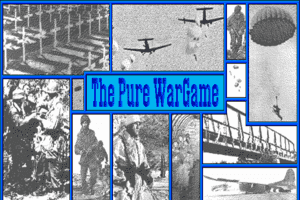
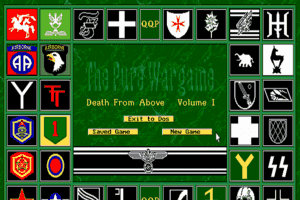
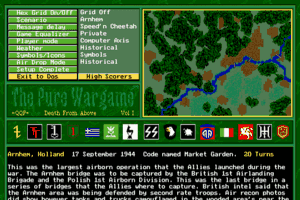
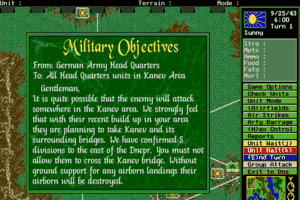
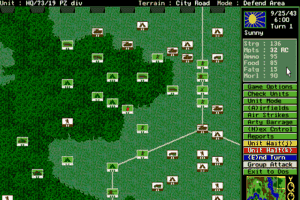
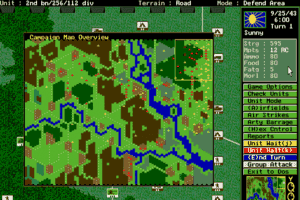
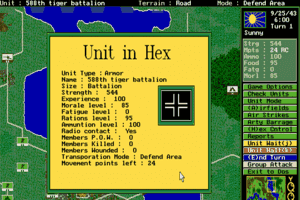
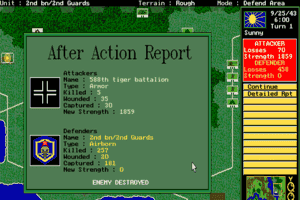
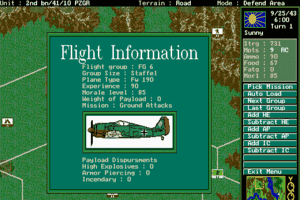
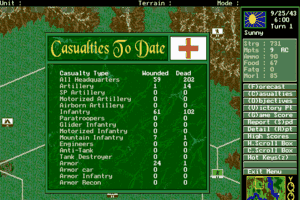
 5 MB
5 MB